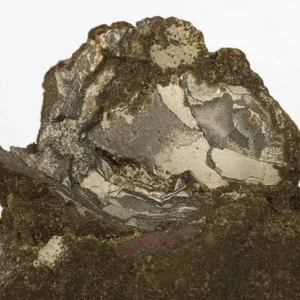Recent research has unveiled intriguing insights into the formation of amethyst and agate geodes in the Los Catalanes Gemmological District, located in Northern Uruguay. This region is renowned for its distinctive geological formations, attracting both scientific interest and commercial exploitation. The study’s primary focus is to examine the geological features of these geodes, delve into their formation mechanisms, and shed light on the crystallization temperatures of the minerals they contain.
Geodes are naturally occurring hollow rock formations, often lined with crystals or mineral deposits, created through various geological processes such as volcanic activity, sedimentation, and hydrothermal systems. The Los Catalanes district is particularly famous for its abundant amethyst and agate deposits, prized for their visual appeal and widely used in jewelry and decorative arts.
Previous studies have highlighted the significance of fluid inclusions in deciphering the thermal and chemical history of mineral deposits. These inclusions are minute liquid pockets trapped within minerals during their formation, providing crucial information about the conditions under which the minerals crystallized. Building on this knowledge, the current study investigates the specific attributes of the geodes in Los Catalanes, focusing on their mineral composition, formation processes, and the environmental factors that influenced their development.
Methodology of the Study
The research adopted a comprehensive approach, integrating fieldwork with laboratory analyses to study the geodes. Field sampling involved collecting geode specimens from various sites within the Los Catalanes district. These samples underwent a series of analytical techniques to ascertain their mineralogical and geochemical properties.
Using cathodoluminescence microscopy, the study examined the internal structures of the geodes, facilitating the identification of different mineral phases and growth patterns. Fluid inclusion analysis was performed using nucleation-assisted microthermometry, which allowed for the measurement of the temperatures at which the fluids within the inclusions homogenized. This method is particularly effective for understanding the thermal history of the geodes, offering insights into the conditions present during their formation.
Additionally, the chemical composition of the minerals was analyzed using inductively coupled plasma optical emission spectrometry (ICP-OES), enabling the quantification of various cations and anions in the samples.
Findings and Interpretation
The study uncovered notable variations in the mineral composition and crystallization temperatures of the geodes. The analysis revealed that the amethyst and agate geodes displayed distinct mineralogical characteristics, with differences in the abundance of elements such as iron, manganese, and aluminum. These variations were linked to the differing geochemical conditions during the geodes’ formation, including the composition of the fluids that filled the cavities and the temperature and pressure conditions at the time of crystallization.
Fluid inclusion studies provided essential insights into the geodes’ thermal history. The researchers found that the homogenization temperatures of the fluid inclusions ranged from approximately 50 to 120 degrees Celsius, indicating that the geodes formed under relatively low-temperature conditions. This finding is consistent with the geological setting of the Los Catalanes district, where volcanic activity and hydrothermal systems likely influenced the temperature and composition of the fluids involved in the crystallization process.
The study also explored the broader geological implications of these findings. The variations in mineral composition and crystallization temperatures suggest that the geodes may have formed in response to changing environmental conditions, including fluid chemistry and temperature fluctuations. This dynamic interaction between geological processes and mineral formation underscores the complexity of the geochemical systems at play in the Los Catalanes district.
Concluding Remarks
This research offers valuable insights into the geological characteristics and formation processes of amethyst and agate geodes in the Los Catalanes Gemmological District. By employing advanced analytical techniques, the study has illuminated the mineralogical variations and thermal history of these unique formations. The findings highlight the critical role of fluid inclusions in understanding the conditions under which the geodes crystallized, revealing a complex interplay of geological factors that shaped their development.
The study not only enhances scientific understanding of the Los Catalanes district but also has implications for the commercial exploitation of these mineral resources. Future research could expand on these findings by exploring the broader geological context of the region and investigating the potential for discovering new geode deposits. Overall, the study enriches the appreciation of the natural beauty and geological significance of Northern Uruguay’s amethyst and agate geodes.







